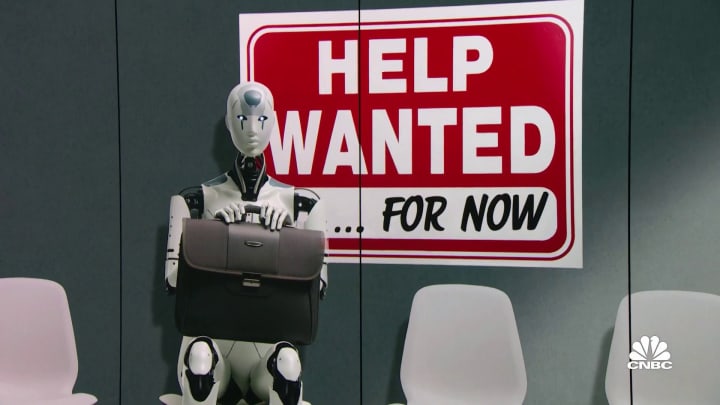Video Friday is your weekly selection of awesome robotics videos, collected by your friends at IEEE Spectrum robotics. We also post a weekly calendar of upcoming robotics events for the next few months. Please send us your events for inclusion.
HRI 2024: 11–15 March 2024, BOULDER, COLO.
Eurobot Open 2024: 8–11 May 2024, LA ROCHE-SUR-YON, FRANCE
ICRA 2024: 13–17 May 2024, YOKOHAMA, JAPAN
Enjoy today’s videos!
In this video, we present Ringbot, a novel leg-wheel transformer robot incorporating a monocycle mechanism with legs. Ringbot aims to provide versatile mobility by replacing the driver and driving components of a conventional monocycle vehicle with legs mounted on compact driving modules inside the wheel.
[ Paper ] via [ KIMLAB ]
Making money with robots has always been a struggle, but I think ALOHA 2 has figured it out.
Seriously, though, that is some impressive manipulation capability. I don’t know what that freakish panda thing is, but getting a contact lens from the package onto its bizarre eyeball was some wild dexterity.
[ ALOHA 2 ]
Highlights from testing our new arms built by Boardwalk Robotics. Installed in October of 2023, these new arms are not just for boxing and provide much greater speed and power. This matches the mobility and manipulation goals we have for Nadia!
The least dramatic but possibly most important bit of that video is when Nadia uses her arms to help her balance against a wall, which is one of those things that humans do all the time without thinking about it. And we always appreciate being shown things that don’t go perfectly alongside things that do. The bit at the end there was Nadia not quite managing to do lateral arm raises. I can relate; that’s my reaction when I lift weights, too.
[ IHMC ]
Thanks, Robert!
The recent progress in commercial humanoids is just exhausting.
[ Unitree ]
We present an avatar system designed to facilitate the embodiment of humanoid robots by human operators, validated through iCub3, a humanoid developed at the Istituto Italiano di Tecnologia.
[ Science Robotics ]
Have you ever seen a robot skiing?! Ascento robot enjoying a day in the ski slopes of Davos.
[ Ascento ]
Can’t trip Atlas up! Our humanoid robot gets ready for real work combining strength, perception, and mobility.
Notable that Boston Dynamics is now saying that Atlas “gets ready for real work.” Wonder how much to read into that?
[ Boston Dynamics ]
You deserve to be free from endless chores! YOU! DESERVE! CHORE! FREEDOM!
Pretty sure this is teleoperated, so someone is still doing the chores, sadly.
[ MagicLab ]
Multimodal UAVs (unmanned aerial vehicles) are rarely capable of more than two modalities—that is, flying and walking or flying and perching. However, being able to fly, perch, and walk could further improve their usefulness by expanding their operating envelope. For instance, an aerial robot could fly a long distance, perch in a high place to survey the surroundings, then walk to avoid obstacles that could potentially inhibit flight. Birds are capable of these three tasks, and so offer a practical example of how a robot might be developed to do the same.
[ Paper ] via [ EPFL LIS ]
Nissan announces the concept model of “Iruyo,” a robot that supports babysitting while driving. Ilyo relieves the anxiety of the mother, father, and baby in the driver’s seat. We support safe and secure driving for parents and children. Nissan and Akachan Honpo are working on a project to make life better with cars and babies. Iruyo was born out of the voices of mothers and fathers who said, “I can’t hold my baby while driving alone.”
[ Nissan ]
Building 937 houses the coolest robots at CERN. This is where the action happens to build and program robots that can tackle the unconventional challenges presented by the laboratory’s unique facilities. Recently, a new type of robot called CERNquadbot has entered CERN’s robot pool and successfully completed its first radiation protection test in the North Area.
[ CERN ]
Congrats to Starship, the OG robotic delivery service, on their US $90 million raise.
[ Starship ]
By blending 2D images with foundation models to build 3D feature fields, a new MIT method helps robots understand and manipulate nearby objects with open-ended language prompts.
[ GitHub ] via [ MIT ]
This is one of those things that’s far more difficult than it might look.
[ ROAM Lab ]
Our current care system does not scale, and our populations are aging fast. Robodies are multipliers for care staff, allowing them to work together with local helpers to provide protection and assistance around the clock while maintaining personal contact with people in the community.
[ DEVANTHRO ]
It’s the world’s smallest humanoid robot, until someone comes out with slightly smaller servos!
[ Guinness ]
Deep Robotics wishes you a happy year of the dragon!
[ Deep Robotics ]
SEAS researchers are helping develop resilient and autonomous deep-space and extraterrestrial habitations by developing technologies to let autonomous robots repair or replace damaged components in a habitat. The research is part of the Resilient ExtraTerrestrial Habitats institute (RETHi), led by Purdue University in partnership with SEAS, the University of Connecticut, and the University of Texas at San Antonio. Its goal is to “design and operate resilient deep-space habitats that can adapt, absorb, and rapidly recover from expected and unexpected disruptions.”
[ Harvard ]
Find out how a bold vision became a success story! The DLR Institute of Robotics and Mechatronics has been researching robotic arms since the 1990s, originally for use in space. It was a long and ambitious journey before these lightweight robotic arms could be used on Earth and finally in operating theaters, a journey that required concentrated robotics expertise, interdisciplinary cooperation, and ultimately a successful technology transfer.
[ DLR MIRO ]
Robotics is changing the world, driven by focused teams of diverse experts. Willow Garage operated with the mantra “Impact first, return on capital second” and through ROS and the PR2 had enormous impact. Autonomous mobile robots are finally being accepted in the service industry, and Savioke (now Relay Robotics) was created to drive that impact. This talk will trace the evolution of Relay robots and their deployment in hotels, hospitals, and other service industries, starting with roots at Willow Garage. As robotics technology is poised for the next round of advances, how do we create and maintain the organizations that continue to drive progress?
[ Northwestern ]




